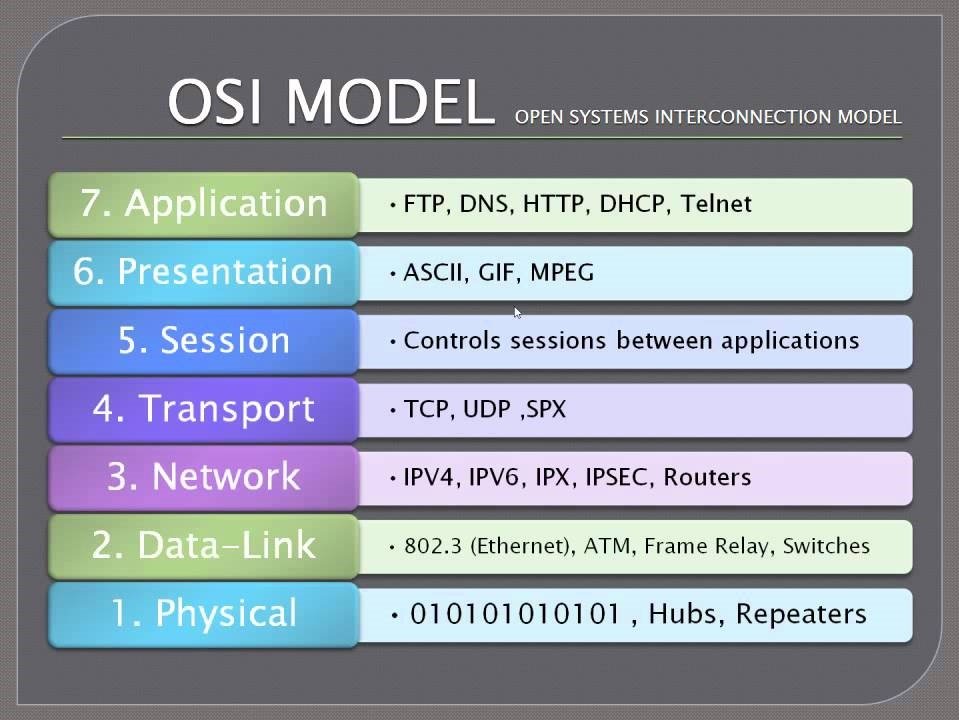Demystifying the OSI Model: Understanding the Seven Layers of Networking
In the world
of computer networking, the OSI (Open Systems Interconnection) model stands as
a cornerstone for understanding how data is transmitted and processed across
networks. Created by the International Organization for Standardization (ISO),
the OSI model provides a layered framework that helps network engineers and
administrators comprehend the intricacies of network communication. This
article aims to shed light on the seven layers of the OSI model, elucidating
their functions and interconnections.
7 Type of OSI Model
1. Physical
Layer
The physical
layer serves as the foundation of the OSI model. It deals with the physical
transmission of raw bits over a network medium. It defines the electrical,
mechanical, and procedural characteristics required for transmitting bits from
one device to another. Key components at this layer include cables, connectors,
hubs, and repeaters.
2. Data Link
Layer
The data
link layer facilitates the error-free transfer of data frames between directly
connected nodes in a network. It ensures reliable point-to-point communication
through mechanisms like framing, error detection, and flow control. Switches
operate at this layer and utilize MAC (Media Access Control) addresses to
forward data to the correct destination.
3. Network
Layer
The network
layer provides logical addressing and routing capabilities, enabling data to
traverse different networks. It uses IP (Internet Protocol) addresses to
identify devices and determines the most efficient path for data packets to
reach their destination. Routers operate at this layer and make forwarding
decisions based on network layer information.
4. Transport
Layer
The
transport layer ensures reliable delivery of data between end systems. It
segments data received from the upper layers and assigns sequence numbers to
facilitate reassembly at the receiving end. It also handles flow control and
error recovery. The popular protocols TCP (Transmission Control Protocol) and
UDP (User Datagram Protocol) operate at this layer.
5. Session
Layer
The session
layer establishes, maintains, and terminates connections between applications
running on different network devices. It allows for session synchronization,
checkpointing, and recovery in case of interruptions. This layer ensures that
data streams are properly synchronized and that communication sessions between
applications are established and terminated correctly.
6. Presentation
Layer
The
presentation layer is responsible for data representation and ensures that data
exchanged between applications is in a compatible format. It handles tasks such
as data compression, encryption, and protocol conversion. This layer ensures
that data from the application layer is prepared and presented in a
standardized and meaningful manner.
7. Application
Layer
The
application layer is the closest layer to end users and provides a means for
applications to access network services. It includes protocols such as HTTP
(Hypertext Transfer Protocol), FTP (File Transfer Protocol), SMTP (Simple Mail
Transfer Protocol), and DNS (Domain Name System). These protocols enable users
to access web pages, send emails, transfer files, and perform various
network-related tasks.
Conclusion:
The OSI
model serves as a conceptual framework that aids in understanding how data
flows through a network. Each layer has a specific role and interacts with
adjacent layers to ensure seamless communication. By grasping the functions of
the seven layers - physical, data link, network, transport, session,
presentation, and application - network professionals can troubleshoot issues,
design robust networks, and implement efficient solutions. Understanding the
OSI model is a fundamental step toward becoming proficient in networking and
achieving success in the field of information technology.
 Reviewed by YourOnlineZone
on
08 July
Rating:
Reviewed by YourOnlineZone
on
08 July
Rating:





